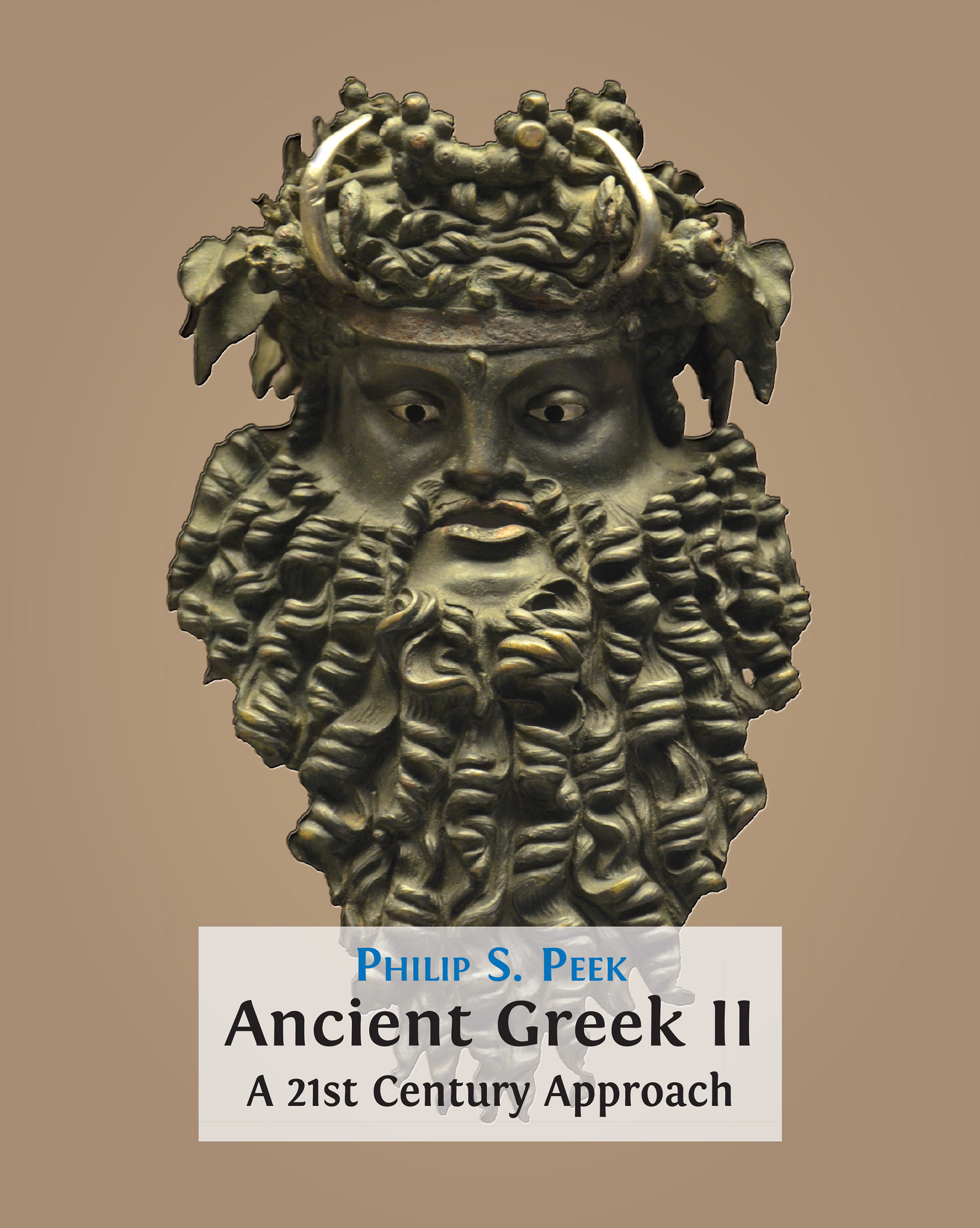Philip S. Peek (author)
In this elementary textbook, Philip S. Peek draws on his twenty-five years of teaching experience to present the ancient Greek language in an imaginative and accessible way that promotes creativity, deep learning, and diversity.The course is built on three pillars: memory, analysis, and logic. Readers memorize the top 550 most frequently occurring ancient Greek words, the essential word endings, the eight parts of speech, and the grammatical concepts they will most frequently encounter when reading authentic ancient texts. Analysis and logic exercises enable the identification of clitics and full words as well as the translation and parsing of genuine ancient Greek sentences, with compelling reading selections in English and in Greek offering starting points for contemplation, debate, and reflection. A series of thirty entries by James F. Patterson, using a simplified morphophonemic approach to understanding language improve readers’ understanding of word formation, their vocabulary, and their ability to read and understand Ancient Greek.This combination of memory-based learning and concept- and skill-based learning gradually builds the confidence of the reader, teaching them how to learn by guiding them from a familiarity with the basics to proficiency in reading this beautiful language. Ancient Greek II: A 21st-Century Approach is written for high-school and university students, but is an instructive and rewarding text for anyone who wishes to learn ancient Greek.
Copyright
Philip S. PeekPublished On
2025-03-31ISBN
Paperback978-1-80511-472-7Hardback978-1-80511-473-4PDF978-1-80511-474-1HTML978-1-80511-476-5EPUB978-1-80511-475-8Language
- English
Contents
Preface
(pp. xi–xix)
- Philip S. Peek
- Philip S. Peek
- Philip S. Peek
- Philip S. Peek
- Philip S. Peek
- Philip S. Peek
- Philip S. Peek
- Philip S. Peek
Module 38: The Subjunctive Cont.: Hortatory · Prohibitive · Deliberative · Emphatic Denial · Tentative Assertion
(pp. 181–198)
- Philip S. Peek
- Philip S. Peek
- Philip S. Peek
Module 41: The Optative and the Subjunctive in Habitual, Potential, and Prospective Conditions
(pp. 255–272)
- Philip S. Peek
- Philip S. Peek
Module 43: Subordinate Clauses of Cause and Time
(pp. 293–312)
- Philip S. Peek
- Philip S. Peek
- Philip S. Peek
- Philip S. Peek
Module 47: Word Order: Clitics and Full Words
(pp. 363–378)
- Philip S. Peek
Module 48: Word Order: Scheppers’ Colon Hypothesis
(pp. 379–394)
- Philip S. Peek
Module 49: Word Order and Continuity
(pp. 395–416)
- Philip S. Peek
Module 50: Word Order and Discontinuity
(pp. 417–430)
- Philip S. Peek
Module 51: Chiastic Word Order and Ring Composition
(pp. 431–450)
- Philip S. Peek
Module 52: Word Order and Tension
(pp. 451–468)
- Philip S. Peek
- Philip S. Peek
- Philip S. Peek
- Philip S. Peek
Module 56: Narratology IV: Time 1
(pp. 515–534)
- Philip S. Peek
Module 57: Narratology V: Time 2
(pp. 535–552)
- Philip S. Peek
Module 58: Narratology VI: Time 3
(pp. 553–564)
- Philip S. Peek
Module 59: Narratology VII: Space
(pp. 565–578)
- Philip S. Peek
Module 60: Memory
(pp. 579–594)
- Philip S. Peek
and See Ancient Greek I: A 21st Century Approach
And see also AWOL's list of
Open Access Textbooks and Language Primers Relating to the Ancient World






No comments:
Post a Comment